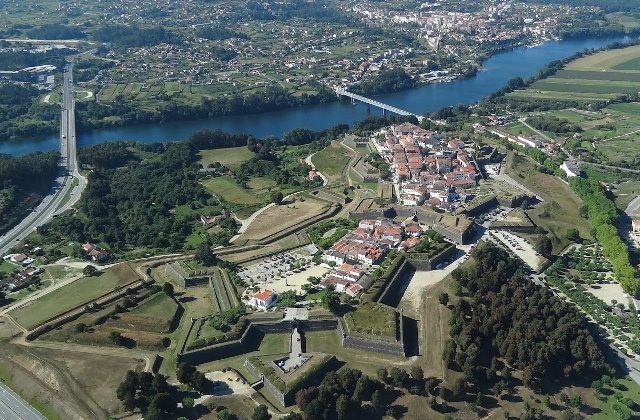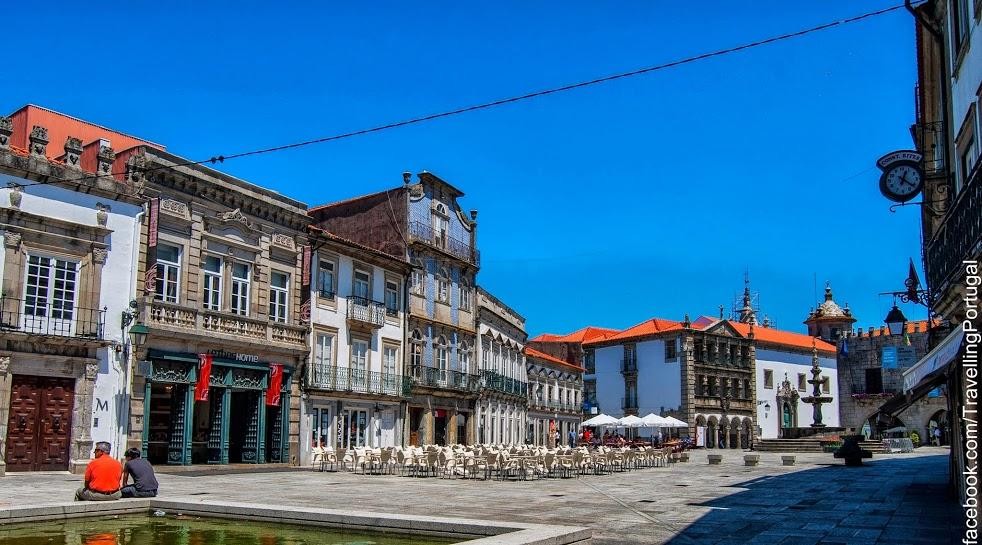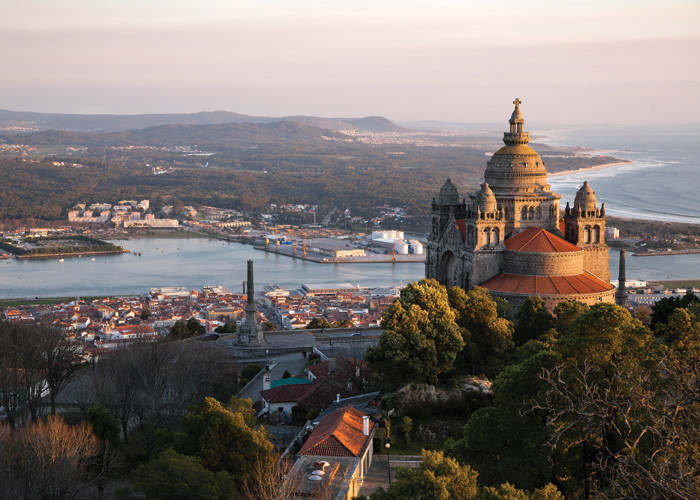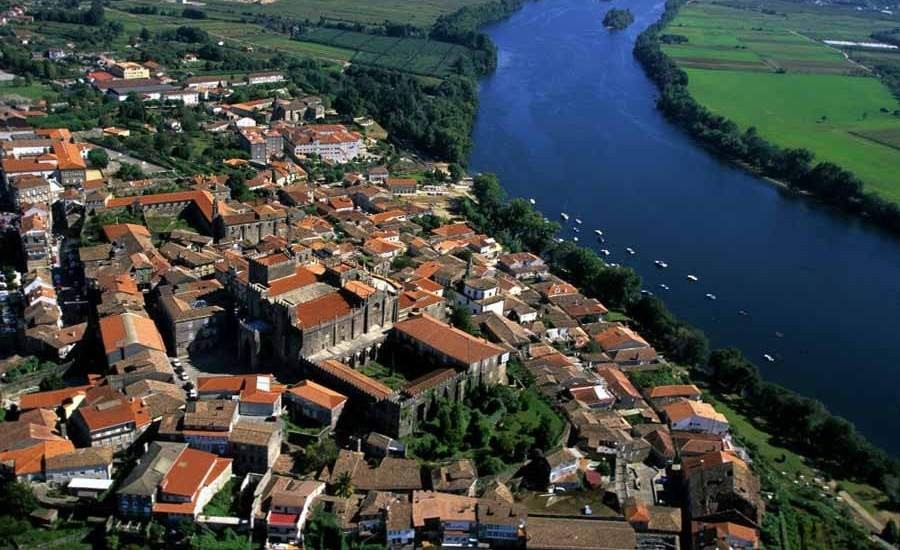La Fortaleza, Viana do Castelo and Tui.
La Fortaleza
Hello again everyone! In today's post, I'm going to tell you about La Fortaleza. I really wanted to share about this location because, although it is not too far from where I live, it still involves leaving the country and entering another. It means encountering another language, another world, another "everything. " This experience is always fun and exciting. Join me on the last trip of this blog. Let's go!
To get here from Bueu, people will usually make the trip by car. Excursions to Portugal are also organized, but mainly to visit the Santuario de Fátima, which is a regular pilgrimage location, as well as Nazaret. You can take the train from Vigo or Pontevedra station, which takes you to Porto and stops at Valenca do Minho and Viana do Castelo.
How to get there by car
We first took the stretch of highway that we use regularly, the expressway. It is narrow and dangerous, and has been marked off from end to end. My friends and I pass through here every morning get to CUVI, (our uni), taking turns driving and sharing the expenses for gasoline. If you come in the summer, try to organize the trip yourself unlike most the tourists and people in the area. The traffic to the beaches causes traffic jams with horrible wait-times and I do not recommend it. If you head back in the direction of Bueu in the late afternoon, you will have no problem, as the traffic is usually in the opposite direction.
We followed the edge along Cangas and crossed the Rande Bridge which I mentioned in yesterday's post. There used to be a toll booth before entering the bridge, but it was removed. Next we left the city of Vigo behind, and drove a little more than 50 kilometers, we stayed on the old road of Porriño, a highway. There is a booth you will pass where you need to stop and pay just over 2 euros. Continue straight. Upon arrival at La Fortaleza you'll see signs to mark the location. All you have to do is find a place to park. Years ago there was customs on the so-called "international bridge", now the "old bridge". The lines that formed, (I never experienced them), were biblical. Now free movement means that you can enter Portugal "without even noticing it". Honestly, it's really cool! The old bridge is still open for use, but a new bridge was built.
La Fortaleza
Soon you'll understand where this location gets its name. Valenca do Miño is what the nearby town is called. This is a reference to the river, El Miño, which divides the two countries of Spain and Portugal. Although there is a lower area, with shops, restaurants as well as public and private services, most people go exclusively to visit La Fortaleza.
It is located at the top, within a strongly protected central area surroundedwd by several walls. You'll be surprissed to see cars driving all the way up and you'll even see traffic lights. Several of the old porticada entries are marked, depending on where you come in from. When you reach the top, you will be dazzled by the tile facades, popular in Portugal. Everything has that "extravagant" air to it. In the past it was common for people to come to purchase the local wares. Visitors would come buy, above all, ceramic roosters, towels and silverware. Today these items are still popular, but there other items of all kinds for sale too. It's common to see people from all over walking around in the alleys. In recent times some areas have been repaved over so there are modern streets. In high season La Fortaleza is like an anthill, full of people. In the parking areas you see many tourist buses. When they leave, they are loaded with large bags. The vosisors can't resist buying duvets, sheets, and homemade garments. Try to avoid coming on weekends, because an otherwise pleasant visit can become a nightmare. There is a flea market every Wednesday that is popular among Spaniards.

You'll be surprised to see a waiter, (or two), standing at restaurant doors. They're used to picking up customers by approaching them. They politely offer you a little pamphlet menu with prices of dishes. For those of you who don't already know, the most popular local dish is cod, and also, seafood broth rice. You can accompany it with a wine specific to the country, the vinho verde, very well known around the world. Attention! If you read the word "presunto", know that it's a pork product. The homemade dessert, among others, is a kind of pudding. If you start the morning ordering a coffee, accompany it with the local Portuguese cake. It's round, and small, yet dense. It's creamy and quite satisfying. If you sprinkle it with cinnamon, (sometimes it already has it), it's better than better.
I noticed the kindness of the people when they interacted with me. They always thank you, (obrigado!), but many are also good at Spanish. As a fact I would say, for those who are from Galicia, (at least in my experience), they don't call you "galician" specifying or showing an understanding of the different areas of Spain. You're just a Spaniard.
Shops are varied and overall have very good prices. Every time you go, you'll discover a new store. The lower area, in the village, is worth a look. One of the entrance faces a nice grove, (with good shade in the summer), which overlooks a park with a music box. It's always hotter here than it is in Bueu. You can tell you're in the south. Stop at the chapel on the right, when you reach the plain of the upper area. You will also see a "very British" telephone booth and the Church of San Teotonio, on the other side of a murete with a waterfall, it's very refreshing. There is a hotel with the same name. If you leave early and want to make the most of the day, the visit to La Fortaleza may be somewhat limited. I suggest you go down and get back on the road, until you reach Viana do Castelo. I haven't been there in a long time, but I remember my last visit, in the summer. I'll try to tell you what I did and what I saw.
Viana do Castelo
Viana do Castelo is about 66 kilometres from Valenca do Minho. You'll get here in forty or forty-five minutes. You can take the coastal route, the old road via Caminha, or follow the highway to Ponte da Lima and exit towards Viana.
We arrived and parked in a new area, a small commercial area, with a few stores and cafes. You have to walk a lot until you reach other points of the town. In the port there was a white ship that caught our attention. We approached it and discovered it was a visitable hospital ship. We couldn't resist the curiosity and temptation. It was the Navío Gil Eannes. You have to buy a ticket to get on board. Once inside, we enjoyed total freedom to tour it. I remember perfectly the kitchen with its pans and a room with a simulator in which you could pretend that you controlled the boat. We went down into its lower deck. It still smelled of gasoline and coated wood.
The ship had a completely working hospital. We were struck by the "delivery chair, " in the corner ready in case it was needed for a birth. It had been a hospital ship usded to provide assistance to Portuguese sailors operating in Newfoundland and Greenland cod fishing. On the way out, we looked for a place to eat. We found a restaurant setup inside an old chapel. My mother kept the card: Cozinha das Malhieras, en la Rúa gago Coutinho. The place had been adapted respectfully. You could see the vaults and the original walls. They prepared us seafood rice for three, and the others enjoyed some Cabrito á Serra D'Arga.
My parents chatted with the waiters. They explained that the state did not provide aid for the conservation of old buildings. You could see a certai level of decline and abandonment throughout the old town. After eating, we set off on our way to Funicular. It took us to the sanctuary of Sagrado Corazón de Santa Luzia, which is in a higher altitude area, about 300 meters high. From there the views are breathtaking, over the Valle del Lima. It can also be reached by car, if you prefer. When we were there, a couple celebrated "a golden wedding" and had to endure the presence and flashes of tourists at their private mass. We finished the visit and went down again. We went back down the road, intending to make a stop at Tui. We had seen it from La Fortaleza, hugged by the river Miño, and we wanted to end the day there.


Tui
When talking about Tui, you can't forget to mention that it has been declared historical artistic work, Only this way can the relevance of its monumental ensemble be understood. It includes the Cathedral of Santa Maria of Tui, the Convent Church de las Clares, the Museum and Archivo Histórico Diocesano, the churches of San Bartolomé and San Telmo. As it is a border area, the Galician accent is very noticeable, which reflects the great influence of Portuguese pronunciation. We let ourselves be carried by the streets. I was very young, but stone lovers will enjoy the walk very much. Also on its main street, one can have a good coffee at Café Central or in the Big Apple.

Photo gallery
Content available in other languages
- Español: La Fortaleza, Viana do Castelo y Tui.
- Italiano: La Fortaleza, Viana do Castelo e Tui
Want to have your own Erasmus blog?
If you are experiencing living abroad, you're an avid traveller or want to promote the city where you live... create your own blog and share your adventures!
I want to create my Erasmus blog! →







Comments (0 comments)